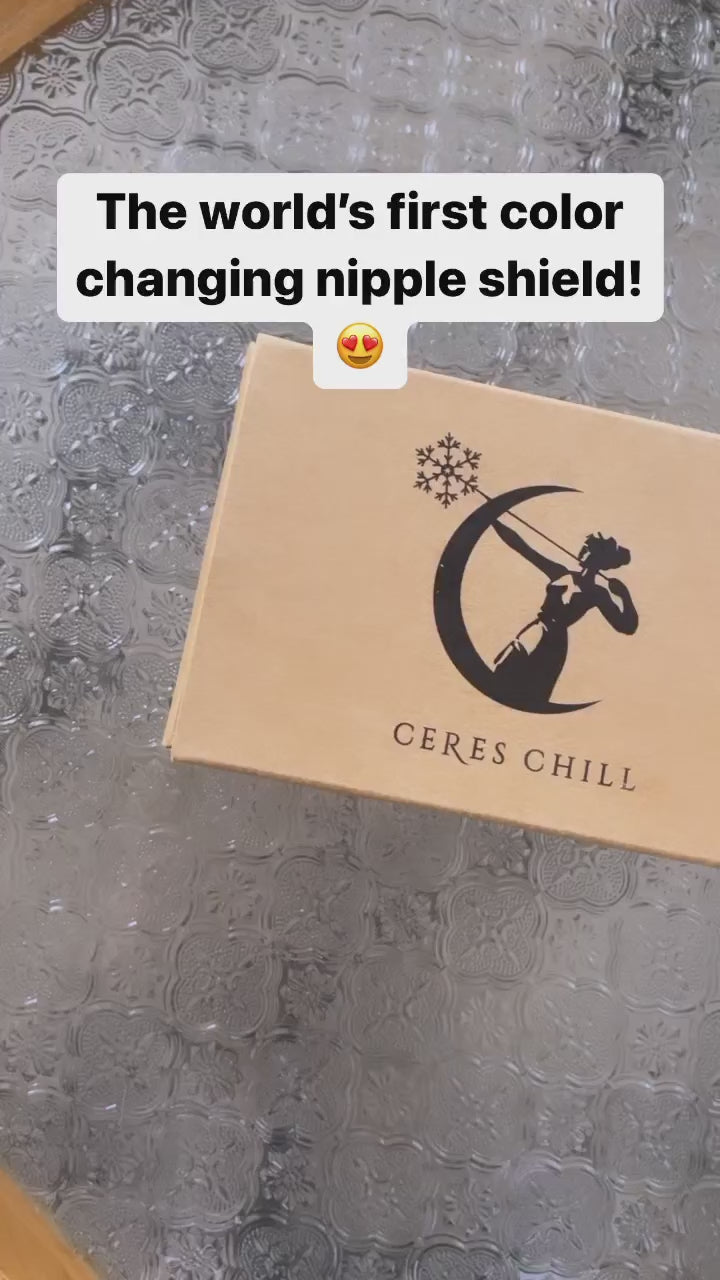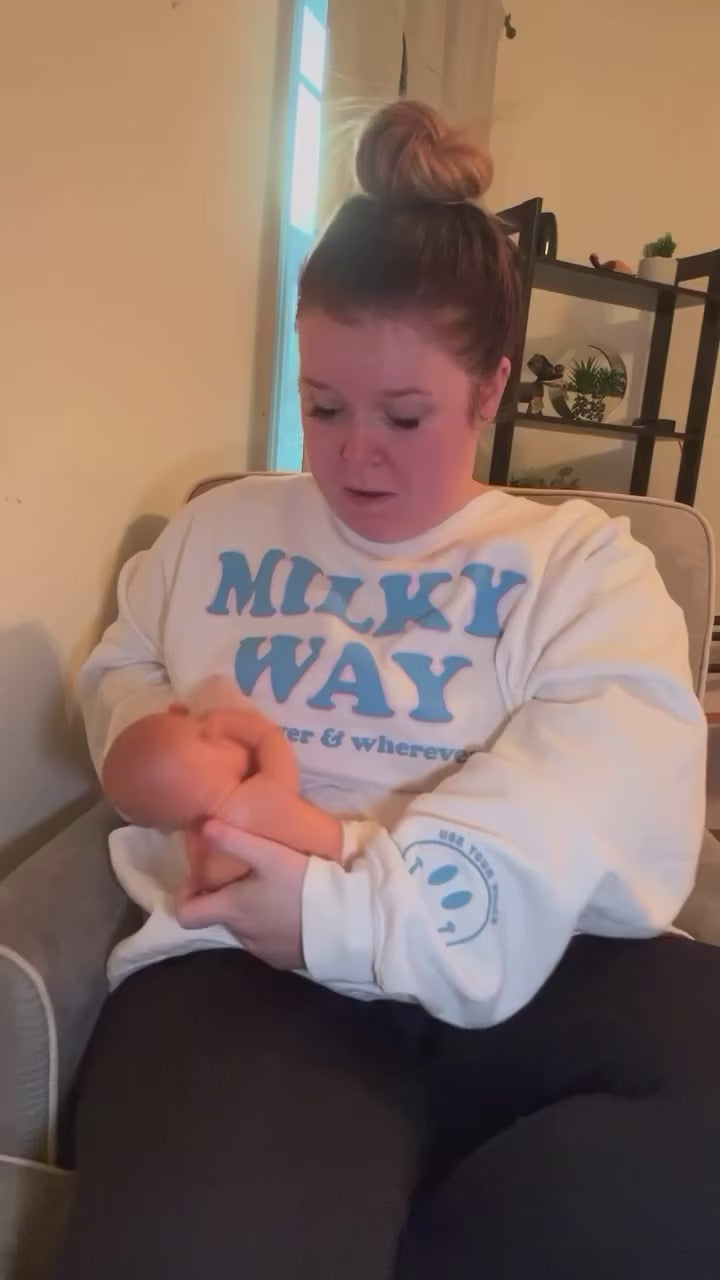
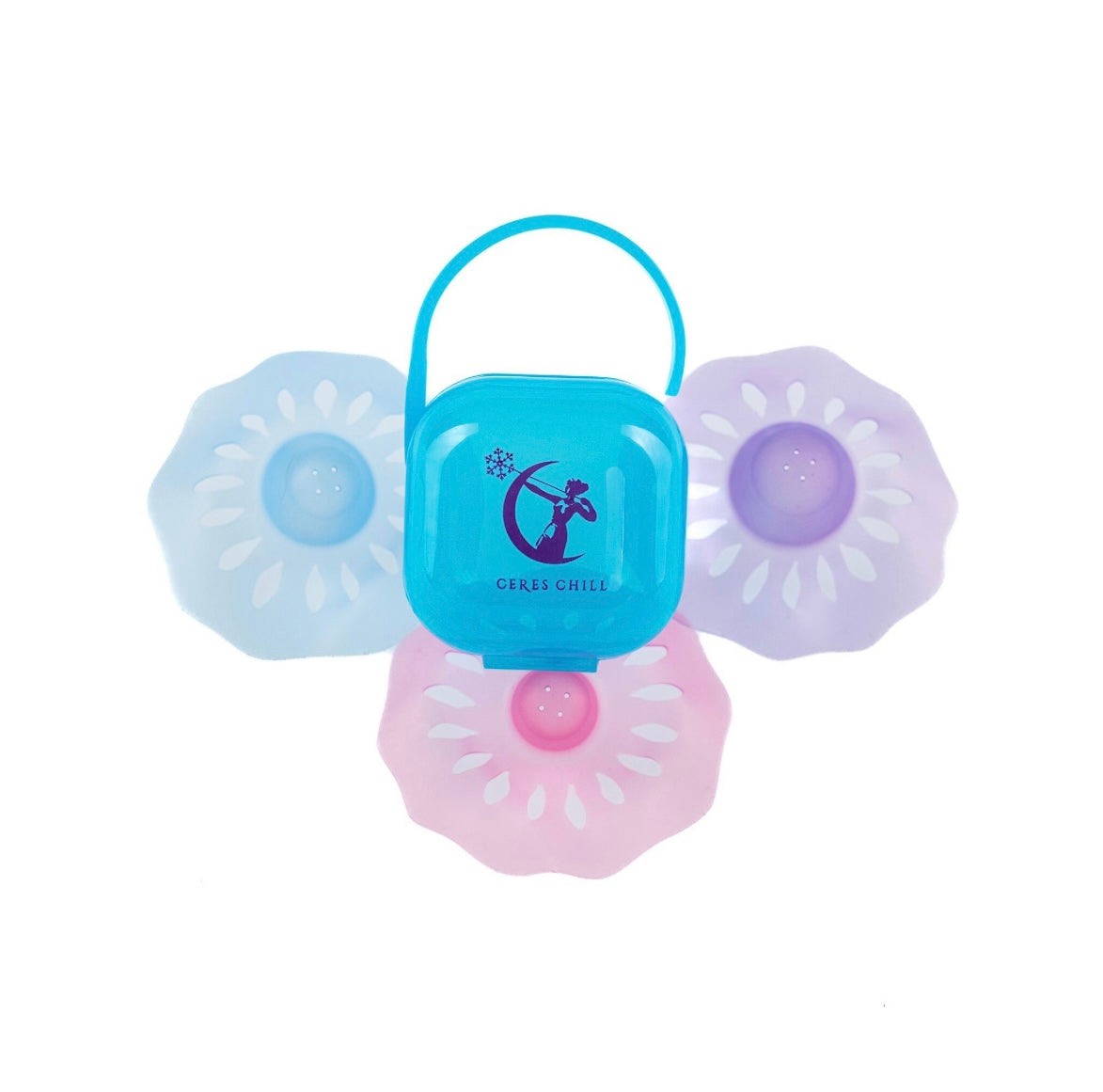
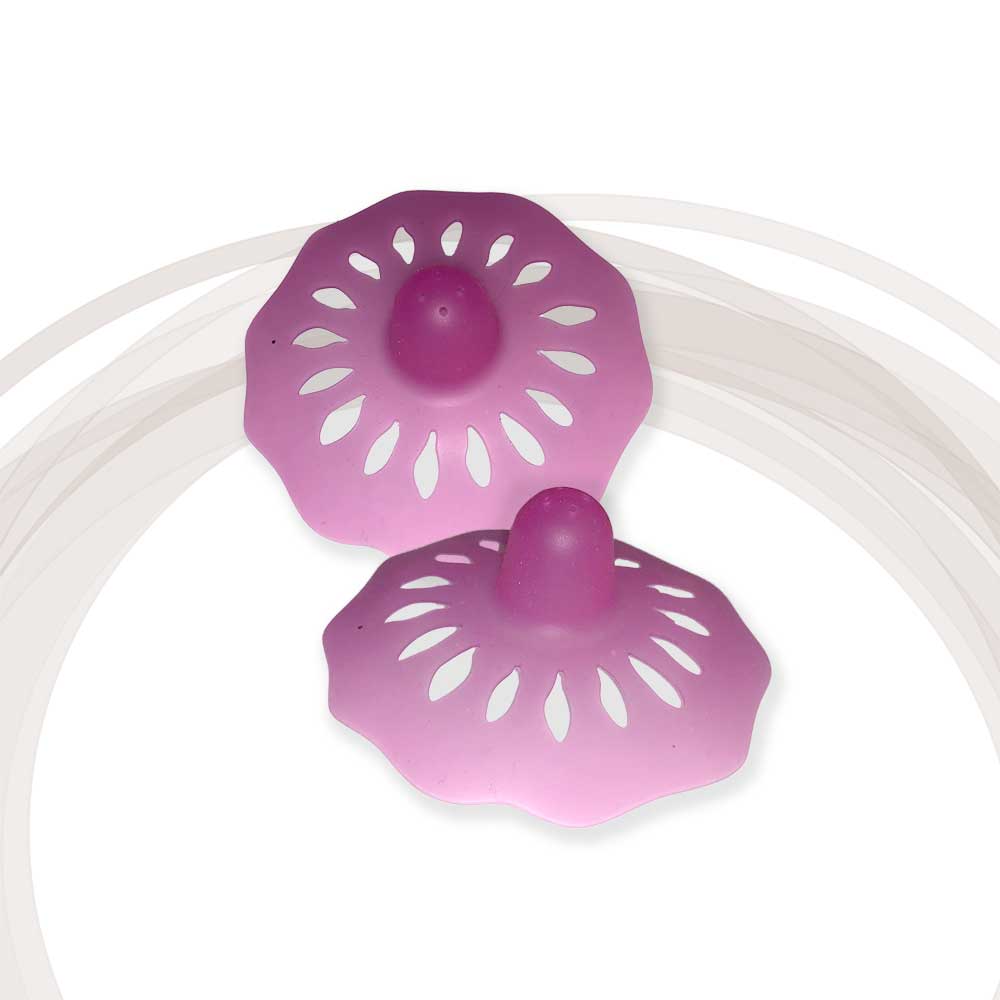
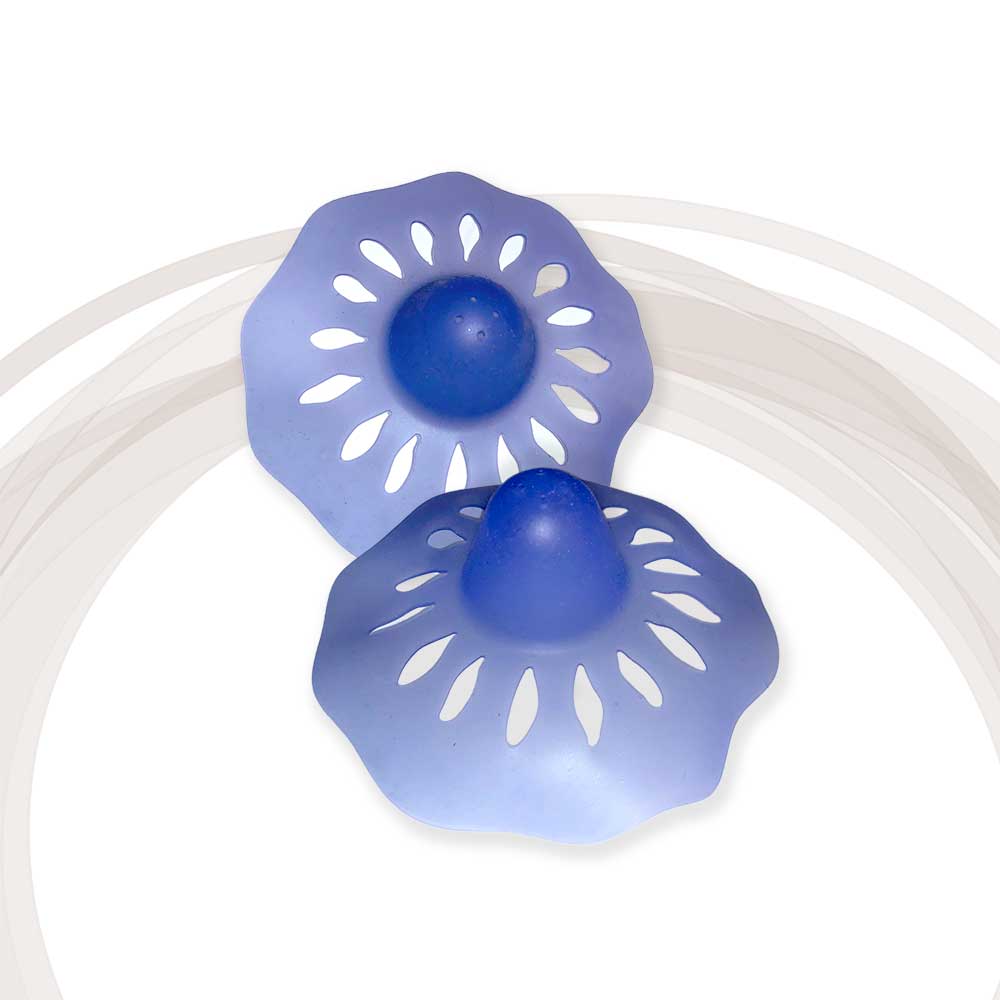
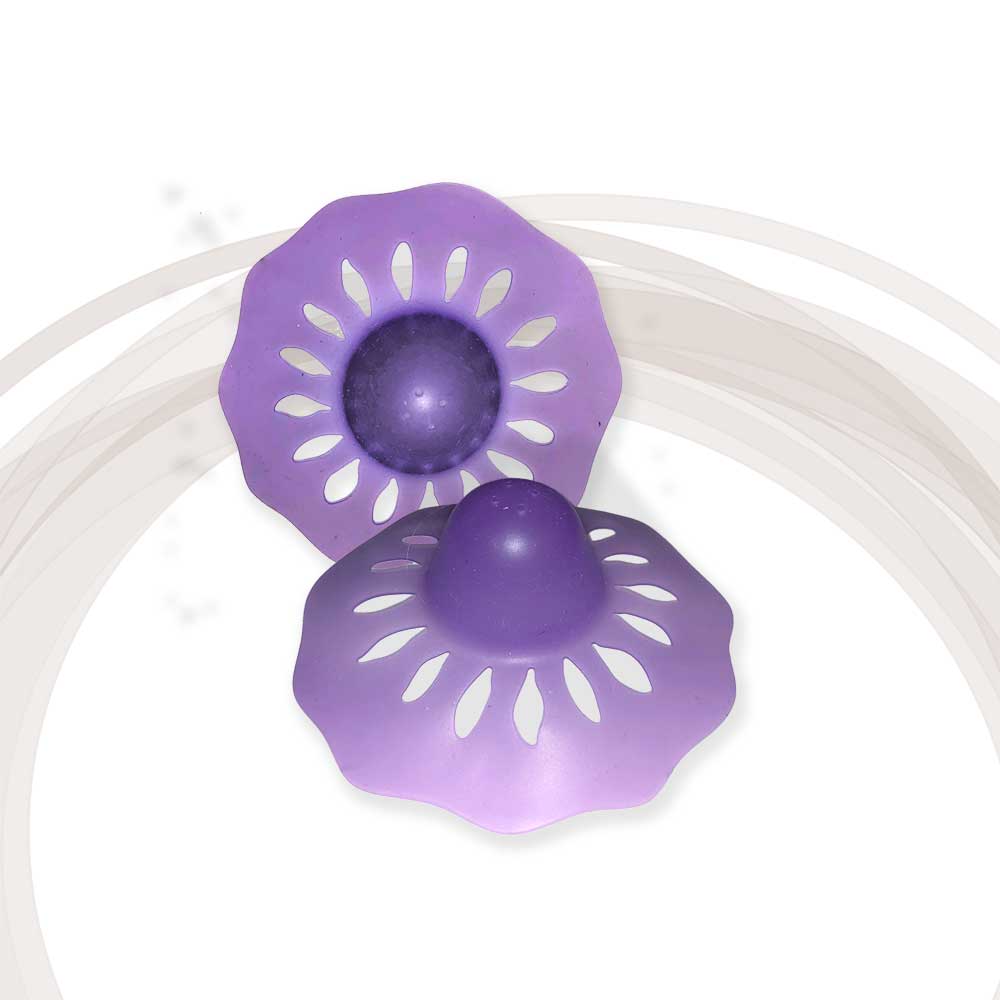


Details
Our Shield Maiden Nipple Shields are designed to assist moms and babies that are facing a variety of breastfeeding challenges. Ceres Chill's patent-pending shields can help your little one properly latch and suckle more effectively. Our unique design allows for maximized skin-to-skin contact between you and your baby. They’re comfortable, breathable, and flexible to help build your breastfeeding success.
Reasons a Breastfeeding Mama May Need Nipple Shields:
- Latching difficulties
- Tongue ties
- Soreness
- Having flat or inverted nipples
But the most AMAZING part for any exhausted new mom is the color-changing quality!
Shield Maidens are colorless when at body temperature so they don't interfere with a more natural breastfeeding experience, and to help you easily find them when they're not in use, the Shield Maidens become a highly-visible color when at room temperature. How cool is that?!
Shield Maidens:
- Are made of laboratory-tested, food-grade silicone that has a velvety skin-texture on the side used by your nursing baby, and is smooth on mama’s side so it adheres well.
- Include (2) Nipple Shields and a booklet by renowned lactation consultant, Katie Dunning. Our User guide helps you to ensure this is the last set of shields you will need.
- Are FSA, HSA, and HRA reimbursable — just submit your receipt to your provider!
- Comes with a Lifetime Warranty.
Tips from Courtney Olson, SLP, IBCLC:
FINDING THE BEST FIT
When it comes to sizing, there are two things I consider: your nipple diameter, and how elastic (or stretchy) your tissue is. If you measure your nipple diameter at rest, I would suggest adding 2-4mm to leave some space between the nipple shield and the base of your nipple. Ideally, you want 1-2mm between the base of the nipple and the inside edge of the shield so you can pull tissue into the nipple shield as you’re applying it and get a nice suction from the nipple shield.
Pro tip: if you have dense tissue, I would start by adding 2mm to your nipple diameter. If you have more elastic tissue, I would start by adding 3-4mm. Sizing for nipple shields is not an exact science - everybody’s anatomy is different. This means you may need to try different sizes, different textures, or even different shapes to find one that fits you comfortably.
Please note: If you're not sure of your shield size (because who is?!), our Magic Sizing Kit includes one shield in each size. You can try them out and see which one feels the most comfortable for you! If you find your perfect match, please reach out to us at info@cereschill.com, and we’ll send you a promo code for 50% off to get the full set.
Nipples are cousins, not twins, so you might even use two sizes at once!
APPLYING YOUR NIPPLE SHIELD
If you just place the shield on your breast, your baby can easily knock it off. There are a few steps you need to take to make sure that it adheres well.
To start, make sure your breasts are not wet and slippery with milk that has been expressed or leaked from your breasts. It might help to wipe them off with a dry burp cloth. Then, you will want to invert the nipple shield half way, place it over your nipple and stretch and pull on the sides with your fingers until the nipple shield “pops” into place. This should pull a little bit of your nipple and possibly some surrounding tissue into the shield and create a seal, so if you gently flick the shield it doesn’t fall right off your breast. You can try to use a little bit of nipple cream or expressed breast milk on the outer edge to keep the nipple shield in place, but these additional steps are often unnecessary if the shield fits well. Check out the below video for an application tutorial:
NURSING WITH A SHIELD
You will still want to work on achieving a deep latch with the nipple shield in place. You don’t want your baby to only latch to the tip of the shield as this can be painful for you and your baby likely won’t transfer as much milk. A baby that is latched well will have most of the mid-lower shield covered by their mouth. Their chin should be pressed into the breast, their cheeks round and full, and you should be able to hear audible swallowing while the baby is actively nursing. If your baby is only latching onto the tip of the shield, nursing is painful, or you suspect your baby is not transferring milk while at breast, reach out to your healthcare team and your lactation consultant for more help.
A Word From Katie Dunning, a Lactation Expert
Hello Hero Moms!
This transitional tool helps...
- Preemies without the physiological development to effectively nurse
- Overly slow or fast let-down — helps regulate the amount of milk received by the infant
- Allow damaged nipples to heal
- Teach a baby how to nurse with flat or inverted nipples, especially if they’ve become accustomed to a bottle
- Resolve nipple confusion from bottle-feeding
- Address tongue-tie, lip-tie, or abnormal palate
Advantages of the Shield Maiden...
- The color change makes it easy to find
- The texture is more like skin
- More malleable than standard silicone which helps avoid painful pinching
- The softer tip is less foreign to the baby and causes less gagging
All my best to you,
Katie Dunning
Lactation advisor for over 25 years, Red Cross Healthy Pregnancy and Healthy Baby Instructor, and IBCLC 2004-2019 / 2004 Worldwide High Score
*Use your Shield Maidens only for their intended use as described in this booklet and do not allow children to access or use them without the supervision of an adult. Children should not play with the Shield Maidens or put them in their mouths. If swallowed, any nipple shield is a choking hazard.








